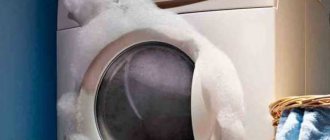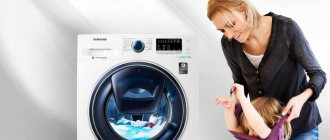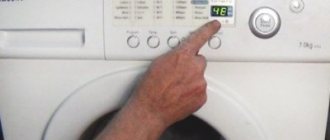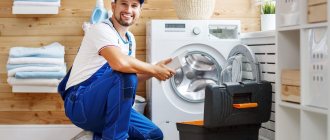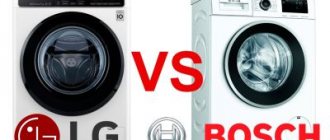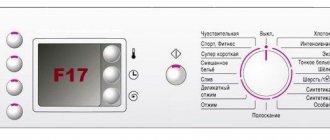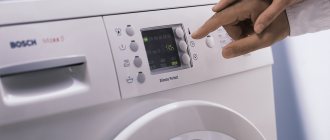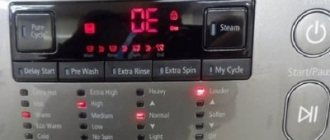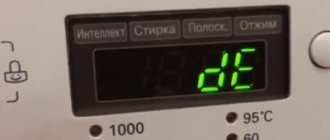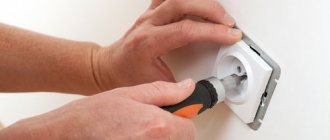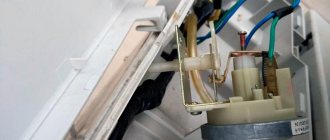Where are washing machines of different brands assembled?
In the vastness of the countries of the former USSR, there is an opinion that home appliances assembled abroad are much better and of higher quality than domestic ones. If household appliances are made in China, then it is better to refuse such a purchase due to the low quality of the products. Today this opinion is not confirmed by real facts. Many leading companies acquire factories in China and the CIS countries specifically for assembling their products.
Washing machine collection factory
About the location of factories
According to an old habit, many domestic buyers, when choosing equipment for their home, ask the seller a question about the country where the model was assembled. Sometimes the answer to this question plays a decisive role in choosing household appliances for the home. In fact, the country in which the Samsung, Ariston, Electrolux washing machine was assembled does not matter. After all, the brand provides a guarantee for all products, regardless of the place of production.
Why do leading manufacturers of household appliances create their factories in different countries? The point is that it is cost effective. The amount of payment to employees in factories plays a large role in determining the price of products. In other words, the cheaper the labor used in the enterprise, the lower the cost of production. This is the only reason why global brands locate their factories in different countries.
Factory - collection of washing machines
Another common misconception is that a new production complex is built for each brand. This is completely untrue. Moreover, economy and premium class equipment are often produced in the same factory and on the same equipment. Such production can often be found in China, where Ariston, Bosch, Samsung, and Indesit washing machines are produced at one enterprise.
Where are popular brands collected?
The large concern BSH Bosch und Siemens Hausgeräte GmbH owns many factories producing household appliances. For example, Bosch washing machines are assembled at one of the factories of this concern. Also, the giant’s production facilities are used to assemble Siemens devices and elite Gaggenau models. The concern owns 41 factories, which are located in 13 countries in America, Europe, and Asia. Rich production capabilities allow us to meet the needs of customers all over the world, taking into account the preferences and material capabilities of consumers.
Machine collection process
It was not without reason that the owners of the Siemens, Bosch, and Gaggenau brands created such a wide network of production enterprises. After all, in each country, consumers put forward their own requirements for home appliances. Plus, different states are located in different climate zones. In the process of developing Bosch and Siemens washing machines for this category of consumers, engineers take these factors into account.
Electrolux equipment
The Electrolux brand has the following brands at its disposal:
- AEG;
- Zanussi;
- Electrolux.
Products are produced in many countries around the world. When studying the instructions for the washing machine, the user always sees in which country the assembly was made. It could be:
- Sweden;
- Italy;
- France;
- Romania;
- England;
- Ukraine;
- Germany.
Where are Indesit and Ariston washing machines assembled? Today, 16 factories are located in 5 countries around the world. These are Italy, Türkiye, Poland, Russia, England.
Red washing machine
Where are LG washing machines assembled? Consumers from the countries of the former USSR in 95% of cases purchase equipment of this brand, which was produced in Russia. In 2006, one of the LG factories was built in the Moscow region. This factory became the sixth in a row of enterprises located around the world. LG washing machines are also produced in Korea, China, Taiwan, the Philippines, and Indonesia.
Assembly of washing machines on a conveyor belt
In conclusion
When wondering where a particular model of washing machine is assembled, you should not assume that the quality of the equipment depends on the country of origin. Leading brands do not aim to degrade the quality of their products. On the contrary, by building factories in countries that are leaders in product sales, manufacturers reduce production costs and the final price for buyers. While maintaining product quality at the highest level.
Home of production
In 2021, European brands will again take first place in terms of sales. The leader in household appliances is Germany, where luxury cars are produced. Next comes Sweden, whose models are characterized by increased reliability, and then Italy and France, which produce equipment with an acceptable pricing policy.
Turkish washing machines appear to be of less quality in the eyes of consumers. Even the Korean assembly inspires more confidence, since the models fulfill their warranty period without interruption.
Let's take a closer look at the main brands of washing machines.
- Miele - assembled only in Germany. All parts for machine assembly undergo separate quality checks. The warranty period is 30 years. A distinctive feature of such models is the absence of vibration during spinning. Some machines have a “honeycomb drum” function, in which things slide along a certain film of water.
- Bosch is also a German brand, although the machines themselves are produced in Spain. Most models have an A+ energy consumption class and are virtually silent. Repairing such machines in service centers is easy and convenient.
- Ariston and Indesit belong to the same manufacturer, Merloni Electromestici. This company has about 500 patents and certifications around the world, selling equipment in 90 countries.
- ASKO is a Scandinavian brand with excellent demands on product quality. The company pays attention to testing and passing through the control system of each washing machine. An important advantage is the safety of all materials, as well as personal production technology.
- Siemens - German washing machines with many functions, quiet operation and low energy consumption. A useful new technology is the IQ detergent dosage system. Models can also remember three independently set washing programs.
- Whirlpool is an American company with new technology promoted in 2021. This function is called “Sixth Sense MAX” and involves the machine independently weighing the laundry. The technique also counts the time required for the cycle.
- Zanussi - equipment with Italian components and a wide selection of designs. A reasonable price is combined with durability and quality. One of the model ranges - IZ - is equipped with an inclined drum, making it easy to load laundry.
Read also: How to connect ceiling lights video
- Ardos are inexpensive and reliable machines that are particularly good at being easy to operate. There are models with a tank made of enameled rather than stainless steel.
- Beko and Vestel are washing machines from Turkey with a low price and efficiency. They do not have a long service life.
- LG and Samsung are automatically assembled by South Korean brands. The machines wash well, but they work for over 10 years. Some Samsung models have a maximum capacity of 10 kg. Silver ions are used in technology to disinfect things.
- Electrolux - models are produced in Sweden, and at the same time they act as a guarantor of reliability. Such cars are the least likely to need to be taken to service. The most unique devices have voice guidance, and the Evolution series has a large-scale electronic control panel.
- Gorenje is a Slovenian brand of washing machines with a large window for front loading. Some models are equipped with a shower system that prevents excessive foaming.
- Candy is a pioneer in many developments. This company began to produce compact machines, develop new washing systems, and even install an oval tank. The brand is a leader in energy and water conservation. The latest model line - Activa - requires only 55 liters of water to cleanse fabrics.
Please note that many brands in Europe and Asia are starting to assemble washing machines in Russia. This significantly reduces the cost of equipment, but reduces its quality. Thus, Zanussi models are assembled in St. Petersburg, Indesit and Ariston are assembled in Lipetsk. Candy production is partially developed in Kirov, and Vestel and Whirlpool are created in Aleksandrov.
Kaluga Samsung plant begins supplying washing machines to Europe
Samsung Electronics, a world leader in the production of household appliances, announces the launch of an export line for the production of washing machines for supplies to 20 countries of Western and Eastern Europe at a plant in the Kaluga region. Also in September 2016, the company began production of a unique series of AddWash washing machines, equipped with an additional miniature door for adding forgotten items or detergents directly during the wash cycle, without the need to drain the water.
From September 2021, the Samsung plant in the Kaluga region begins to supply washing machines for export to 20 European countries, including Austria, Estonia, Latvia, Lithuania, the Czech Republic, Slovakia, Italy, Denmark, Sweden, Poland, Bulgaria, Romania, Albania, Bosnia-Herzegovina , Montenegro, Macedonia, Serbia, Slovenia, Croatia and Hungary. The first export batch of washing machines was sent to a warehouse in Riga at the beginning of September for sale in Lithuania, Latvia and Estonia.
Samsung AddWash front-loading washing machines are equipped with an additional door, with which you can add laundry or softener directly during the wash, as well as add pre-washed items for rinsing and spinning only. Thanks to the already known EcoBubble technology, the washing machine increases efficiency washing, turning the detergent into foam, which quickly penetrates into fabrics, eliminating complex stains. In Russia there is a wide range of AddWash washing machines, with different loading capabilities (from 6.5 kg to 12 kg) and made in several color combinations. The basis of the model range is represented by narrow washing machines with a depth of 45 cm, which are most in demand by Russian consumers.
“The opening of an export line for the production of washing machines is an important stage in the development of our plant,” said Lee Haoung Kyun, General Director of the Samsung Electronics plant in the Kaluga region. – For us, this is not only another expansion of production, but also a symbol of recognition of the quality of our products. Production culture and product quality are two main components of our strategy. Today we see that the plant in the Kaluga region meets all European standards and is able to consistently provide the highest level of quality, producing innovative and high-tech products for European countries.”
“The start of exports of products from the Kaluga Samsung plant to European countries is the best confirmation of the high quality of the products,” commented Dmitry Kartashev, director of the sales department for household and audio-video equipment at Samsung Electronics in Russia. “We are especially pleased that the plant quickly masters the production of the latest models of household appliances and electronics, which allows us to offer Russian consumers the most current models at the best prices. For example, already in September of this year, sales of innovative AddWash series washing machines manufactured at our plant will begin in Russia, equipped with an additional door for reloading clothes or detergents during washing. Washing machines with this technology have already received recognition in the world, which is confirmed by the “Editors Choice” awards from trustedreviews.com, “Best Buy” from which.co.uk, 5 stars from lesnumeriques.com and others.”
For 8 years now, Samsung has been paying close attention to the development of local production in Russia.
The Samsung Electronics plant in the Kaluga region (Samsung Electronics Rus Kaluga LLC) was opened on September 4, 2008 in the north of the region in the Borovsky district at the 85th kilometer of the Kyiv highway. The volume of investments in the enterprise amounted to more than $250 million. The total area of the plant's production workshops reaches 40.6 thousand square meters. m. The plant complex includes facilities where finished products are assembled, a workshop for the production of printed circuit boards and microcircuits, and a thermoplastic casting workshop. Today, the plant produces Samsung TVs, monitors and washing machines. The plant also houses the SRDC logistics center, the main warehouse center for all Samsung products imported to Russia.
Components and raw materials are supplied to the plant, among other things, by Russian partners, as a result of which processes of localization of production are being developed at the plant. In addition, the plant has a favorable location. In November 2015, Samsung initiated the “New Silk Road” project - a transport route that connects North-East Asia with consumers and partners in Europe through the territory of Russia. This project allows us to reduce delivery times and optimize production processes and reduce logistics costs.
Rating of the best German brands
What is the difference between a Bosch automatic washing machine (made in Germany) and analogues on the market?
- 3D Washing technology allows you to quickly and effectively remove stains and even pieces of dirt from your things.
- Unique washing algorithms for any type of fabric.
- The latest program for processing delicate fabrics, the machine works even more carefully, cleans, leaving the fabric unchanged.
- The washing machine operates almost silently.
- A series of narrow Bosch washing machines made in Germany, only 33 cm wide.
- High quality components and assembly. As a result, there is a very low percentage of breakdowns.
- Bosch uses the latest developments to save time, water and energy.
Bosch pays great attention to safety when using its devices.
Each washing machine is equipped with:
- balance stabilizer, ensuring no shaking;
- foam production control system;
- precise water dispenser;
- protection against device overloads;
- pollution sensors.
Specialists use only original parts, assemble them on German equipment, following unique developments.
With all this, the price remains more than competitive even on the Russian market.
In addition to Germany, Bosch equipment is assembled in Western and Eastern Europe, Southeast Asia and the CIS countries.
Experts note that washing machines,
German assembly
, are superior to equipment assembled in other countries.
It is worth noting that the share of manufactured products in Germany of the world is only 7 percent, that is, it is not easy to stumble upon it.
According to statistics, cars from Bosch’s homeland are on average five to seven years more durable than their international “brothers.”
There are only 4 factories for the production of washing equipment in Germany.
One of the largest is located in the city of Noen near Brandenburg; not only Bosch, but also Siemens washing machines are produced here.
Basically, the Germans produce cars with the WAS, WAY, WIS, WLX, WKD logo. For example, they no longer produce new washing and drying machines in their country. Because, as in other countries, it is more profitable to carry out assembly due to cheap labor and favorable business conditions.
And in Germany, they mainly develop laboratories, technology centers, and pilot production to create more and more advanced and convenient technology for humanity.
In addition to the 4 German factories, 37 more are located around the world:
- – Washing machines WAA, WAB, WAE, WOR are made in Poland.
- – France produces WOT cars.
- – Spain produces equipment marked WAQ.
- – WAA and WAB washing machines are supplied from Turkey.
- – In Russia (the cities of Engels and Tolyatti) they produce washing machines WLF, WLG, WLX.
- – China supplies equipment marked WVD, WVF, WLM, WLO.
READ MORE: UE error on LG washing machine: what does the code on the display mean, what to do
Buying Bosch equipment
When choosing a washing machine, you need to decide on the size, either you need a compact model, or you are ready to take a large-sized washing machine with a great design.
BOSCH also has a special line of washing machines for embedding into furniture, which have reduced vibration during operation. Think about what washing machine load will be optimal for you; the company offers models of 3, 5 and seven kg.
Today, BOSCH produces about 500 different models of modern washing machines.
BOSCH WLG 20060 OE is a reliable and fairly inexpensive washing machine with a laundry capacity of up to 5 kg. The technique is simple, but the basic programs are present. There is protection against imbalance, leakage and excess foaming. Assembly in Russia, price about 310 dollars.
BOSCH WVH28442OE is a washer-dryer unit with 16 washing programs and quite a large number of functions. For example, automatic detection of the weight of things, loading the machine halfway, light ironing, re-rinsing if necessary, and much more. Load for washing 7 kg, for drying - 4 kg. Country of origin China. The price is about 1500 dollars.
BOSCH WAW32540OE is a German-assembled machine, load 9 kg at a spin speed of 1600 rpm, 14 programs and a lot of additional functions (ironing, stopping during a program, washing without a spin function, weighing, etc.). This model can put almost any things in order. The price in Russia ranges from $1,260.
BOSCH WAW24440OE is also a German-assembled model, but cheaper. Holds 9 kg of laundry, spin speed up to 1200 rpm, not as economical as the previous machine. Price: 1010 dollars.
The service life of all Bosch washing machines ranges from 7 to 15 years without breakdowns; you must agree, this is a weighty argument when choosing a manufacturer. The Germans produce only the best equipment; when choosing quality or quantity, they always choose quality.
BOSCH employees care about their reputation and relentlessly follow the slogan of the corporation’s founder, Robert Bosch: “I’d rather lose money than trust.”
You can select original Bosch washing machines on the official website of the manufacturer in Germany. The company’s corporate website contains a list of trading platforms that sell the household appliances you need.
Here you will find not only washing machines, but also Bosch dishwashers made in Germany, electric ovens, refrigerators, vacuum cleaners, meat grinders, electric kettles, screwdrivers, hammer drills and much more.
Eurosoba brand washing machines have faithfully served their owners for 15 years, and this is not an unfounded statement by the company, but carefully studied statistics.
Of great quality are washing machines, the parts of which are painstakingly assembled by hand. The presence of manufacturing defects in such machines is much lower, but their prices are often inflated. Finding a manually assembled machine at an affordable price is a great success. The Eurosoba brand offers its models of washing machines, parts that are partially assembled by hand, at an optimal price-quality ratio. Everyone knows that it is better to overpay once than to spend more on repairs and maintenance of equipment later.
The main difference between cars assembled in the Russian Federation and imported analogues is that they are completely Russified and oriented towards the Russian market. The demand of domestic buyers has several features that are taken into account by marketers of licensor companies. Thus, in Russia, front-loading equipment is more popular - perhaps because they are cheaper than vertical-type machines. Only Ariston produces top-loading models in Russia.
In addition, consumers are paying more attention to models of small dimensions and depth, with a load of up to 4-6 kg - this is due to the small size of housing built in Soviet times. Russian production takes this demand into account. Thus, the segment with a depth of 50-55 cm is represented by domestically assembled Beko, Ariston, Candy, and Atlant machines. Machines with the smallest depth, 33-36 cm, are produced at Russian enterprises Indesit, Ariston, Atlant.
Recently, our consumers have begun to pay more attention to water and electricity consumption. Therefore, all presented models of machines, assembled or produced in Russia, have energy-saving properties and functions: energy consumption class is not lower than A, water consumption is reduced to an average of 45 liters per wash.
Therefore, more and more often, buyers are choosing completely domestic washing machines, among which there are many good modern models. Their quality is often higher than that of Chinese or Turkish analogues, only assembled in the Russian Federation. These include the already mentioned cars, as well as automatic models “Vyatka-Maria” and “Vyatka-Katyusha”, which belong to the economy class, but have all the necessary functions.
German-assembled Bosch washing machines have managed to become a well-promoted brand for good reason. For what reason are Bosch automatic cars so valued? German pedantry and scrupulousness are of particular importance when assembling complex household appliances. When these qualities are combined with the most advanced technologies, the result is work of the highest class.
Class A - this is how the German Bosch washing machine is rated in terms of energy efficiency. In addition, these devices have an expanded menu and a set of additional functions. All of the above allows German-assembled Bosch washing machines to operate smoothly for a long time.
- production of multifunctional washing machines;
- length of service life of devices;
- its average price and high quality;
- Bosch washing machines assembled in Germany operate smoothly, without even needing minor repairs.
Once upon a time, Robert Bosch, the founder of the company, uttered a historical phrase that became an effective slogan. His words are still relevant today; Germans, who care about their reputation, do not allow themselves to work poorly.
The design of Bosch washing machines is based on innovative ideas. This applies to absolutely all washing machines coming off the assembly line in Stuttgart; compact models built under the sink are no exception. All models of this brand are characterized by a professional level of laundry washing. High quality washing is ensured by the following features of Bosch machines:
- Using an electronic programmer.
- Possibility of loading a large amount of laundry.
- Foam control.
- Dosing water according to the type of fabric and load level.
- Elimination of possible imbalance when spinning clothes.
- Low energy intensity of the process (energy savings reach 40%).
It is known that any product that is in great demand among buyers can be counterfeited by unscrupulous manufacturers. There are cases when, under the guise of German washing machines, they sell cheap Asian counterfeits, the quality of which cannot be compared with the quality of the original product.
About Samsung washing machines
It was impossible to predict that the company supplying the products would become a leader in the development of high-tech components. 1969 was a turning point for Samsung.
The company merges with the Japanese corporation Sanyo and creates a new brand, Samsung Electronics. The main focus is the production of household appliances. Samsung released its first washing machine in 1974.
When developing washing machines, the manufacturer focuses on:
- On the latest technologies in the field of technology.
- To taste. A variety of cars with a nice design, technical characteristics and price.
- The company, inspired by positive reviews of technology, creates customer-friendly technologies with improved washing quality.
Peculiarities
In search of the best model, the buyer determines a number of characteristics of the device. The company thinks about its customers and provides a list of basic modes with specified parameters for washing. If necessary, you can change the function and make it optimal for yourself.
The presence of additional options makes washing easier. Briefly about them:
- Pre-wash: makes it possible to thoroughly remove stubborn stains without harming clothes.
- Soaking: keeping items in water for a long time for better penetration of the detergent.
- Quick wash: designed to remove stains from small amounts of laundry in a short time (15/30 minutes). Handkerchiefs, socks, tights and other small items are suitable for this regime.
- Additional rinse and spin function. Use as an auxiliary procedure after the main wash. Used for large loads of laundry or for adding conditioner.
- Light ironing reduces wrinkles in clothes by reducing spin speed. Please note that in this mode the laundry will be more damp.
- Eco Drum Cleaning. Some Samsung washing machines have this feature. Every 40 wash cycles, the indicator lights up, warning you that the drum is dirty and needs to be washed.
Technologies
Surprise and help - this is probably the motto of the Korean corporation. The company is constantly moving forward, modernizing its products using original technologies.
An overview of the popular ones:
- AddWash – models with possible additional loading of laundry. An additional window located on the door for putting things in without stopping the process allows for continuous washing with a maximum load.
- Eco Bubble – using a special foam formation, the material is cleaned at low temperatures.
- Samsung Smart Home – using wi-fi, you connect to a smartphone, tablet or laptop. This makes it possible to control the washing machine using gadgets.
- Smart Check and Smart Washer - the first function identifies the problem. Thanks to the second (when installing a certain program), all information about the breakdown is available through the smartphone camera.
- Volt Control – the ability to operate the device during voltage surges (in the range from 165 to 275 volts). When the current readings change below or above the presented limits, the machine stops functioning until the output voltage stabilizes and begins its work from the moment where it stopped.
- Can Balance - the ability to balance a drum by moving weights. This function reduces the amount of scale and increases the service life.
- VRT+ is an option to prevent vibrations by distributing things and normalizing the load at high spin speeds.
- Aqua Stop - when a liquid leaks, a protective mechanism is activated to shut off the water supply.
- Child lock – locks the buttons on the instrument panel in wash mode.
- Diamond drum – technology of “honeycomb” drum surface. In contrast to the classical design, a structure reminiscent of a honeycomb is used, but it consists not of hexagons, but of quadrangles with fine perforations around the perimeter. The technology allows you to wash clothes in a gentle mode and it is impossible for items forgotten in your pocket to penetrate under the drum.
- Diamond Drum – unlike the previous model, the perforation is not along the perimeter of the figures, but in the depths. This structure makes it possible to wash clothes in a soft mode without the formation of pills and cuts.
- Swirl drum - the functional meaning of the relief surface remains the same, only the appearance changes. A clear difference can be seen in the photo on the Internet.
- Wavedrum – the presence of an inverter motor ensures low noise levels and minimal energy costs. The surface of the drum consists of horizontal stripes (convex part and perforation), which ensures uniform wetting of things.
Advantages and disadvantages
Considering the large assortment of washing machines of different functionality and manufacturers, the buyer is faced with the question “Which one to choose?”
When considering competitors' models, the positive and negative aspects of Korean technology are highlighted.
The advantages include:
- High quality electronic filling.
- Clear interface.
- Convenient touch panel.
- The minimum number of revolutions is 400, the maximum value reaches 1600.
- Exemplary resistance to intensive spinning of laundry.
- In the event of a breakdown, codes are displayed on the screen, with the help of which it is easy to recognize the problem.
- Some models have high noise levels.
- Frequent bin leakage and damage to the drainage system.
- The cost of a washing machine assembled on a Chinese assembly line will be higher than that of a Russian manufacturer.
In any case, before purchasing a washing machine, determine the required characteristics and read reviews from customers and specialists.
Top Russian-assembled washing machines
So, you have decided to purchase Russian-made equipment, but have not yet made your choice. The presented rating of the best models can help with this. It is based on user reviews, reliability, functionality, value for money.
BOSCH WLG20265OE
Russian assembly of Bosch washing machines has been carried out in the former capital of Russia, St. Petersburg, since 2012. This model was included in the rating due to its inexpensive price and high quality, which allows us to judge the reliability of the product. The maximum load with small dimensions is 5 kg. A nice bonus: a timer function and reloading of laundry while the wash is running.
Vyatka Maria and Vyatka Katyusha
These two domestic Russian-made automatic washing machines are the dream of any housewife. The price is acceptable even for people with below average income. Katyusha is a more compact option, with a load of laundry up to 4 kg (in Maria, a load of kg more is allowed). The maximum spin speed for both machines is 1000 rpm, and they are also equipped with protection against water leaks. The models are made from imported parts, which indicates their high quality and reliability.
Vyatka Maria and Vyatka Katyusha
Indesit IWSC 5105
For a reasonable price of about 14 thousand rubles, the user receives 16 washing programs, a delay timer function, anti-crease protection and many other useful options for everyday life. Buyers in the reviews note that the machine is not noisy, spins clothes well, and efficiently washes any dirt. The Russian-assembled Indesit washing machine is a good choice for budget-conscious families.
Indesit IWSC 5105
Quality doesn't have to be expensive. Why overpay several thousand for foreign assembly if in Russia washing machines are assembled from imported parts and using the same technologies as abroad. Specialists regularly monitor equipment for compliance with established quality standards, so the risk of receiving defective equipment is reduced to zero.
Today it is difficult to surprise anyone with an automatic washing machine, but once upon a time the appearance of this miracle unit aroused genuine envy among neighbors, especially among women. After all, with her, basic homework, which took a lot of time and effort, became several times easier. The “smart” machine did not require constant presence, it selected the modes itself, and it didn’t care about the most complex and difficult spots.
Nowadays, almost every family has such a unit, and every year manufacturers increase its functionality and improve its appearance. That is why, among such a variety of models, it is very difficult to choose one that fully meets the requirements, is endowed with the necessary characteristics and its price corresponds to the quality.
Read also: 78M05 pinout circuit diagram
Our experts selected 12 manufacturing companies and presented a rating of the best automatic machines of these brands, taking into account their operational capabilities and based on reviews from ordinary customers.
Model rating
The rating is based on popular models of Samsung washing machines in 2021. Let's look at five of them, highlighting their advantages and disadvantages.
Samsung WF8590NLW8 – maximum load and excellent wash quality
The model has front loading and a maximum laundry capacity of 6 kg. The machine is equipped with eight operating modes. Choose an option based on the type of laundry, the quality of washing remains high. The washing machine interface is convenient and easy to use.
The only negative is the presence of noise during the spin cycle, but the annoying volume is different for everyone and not everyone will consider this nuisance as a disadvantage. Also, before washing, manufacturers advise leveling equipment to minimize jumps.
- Large loading volume.
- Design.
- Stable during spinning.
- Noisy at work.
Samsung WW65K42E08W – silence and exemplary performance
Intuitive controls, small size and the AddWash function are not all the charms of the model. A small hatch on the door allows you to add items during washing, but not in all modes.
Eco Bubble technology and Diamond drum wash stubborn stains even at low temperatures without damaging clothes. The stability of the machine during spinning reduces noise and ensures comfortable work.
- Reloading laundry.
- Simple controls.
- Large load of laundry.
- A little noisy when spinning.
Samsung WW90J6410CX – for global washes
The increased depth of the machine provides a maximum load of 9 kg. An expanded menu and number of modes, the presence of additional functions allows you to wash large volumes of items without compromising the quality of washing.
One of the advantages is the Smart Check fault diagnosis, which recognizes a fault when it breaks down.
- Design.
- Washing quality.
- Variety of programs.
- Dimensions.
Samsung WD70J5410AW – new features
Nice design, convenient controls and high information content – this is what fascinates the model. But the most important thing is drying and eliminating unpleasant odors.
Imagine pillows, blankets and other things that are not recommended to be washed, you just put them in the drum, press a button and you're done.
When choosing a unit, make sure that it will fit into the doorway. Its widest part is 60 cm.
- Drying.
- Informative display.
- Capacity.
- The depth of the machine is increased; it does not fit into all doorways.
Samsung WD80K5410OS – maximum functionality
A washing machine that keeps up with technology. Touch control, smartphone settings, 3 drying programs, bubble wash, 14 operating programs, AddWash, AirWash functions, Eco drum cleaning, silver design and black door - how can you not fall in love.
Only small flaws in the model can irritate. Namely: a loud click when the door slams, long drying time at maximum load and an inflated price.
- Capacity.
- Washing quality.
- Quiet in operation.
Whatever model you choose, the technology always remains at its best. It is not for nothing that the Samsung Corporation is one of the central figures in the production of high-tech technologies.
Quality Rating
It is much more difficult to compile TOP ratings for the quality of washing machines than for reliability. There is less objectivity here, because the degree of pollution, water hardness and the detergents themselves vary from housewife to housewife. Some buyers often choose the wrong program and wash cycle, and then complain about poor performance of the equipment.
So, compiled on the basis of public opinion, the quality rating says that the best washing is possible in machines of the brands Bosch, Ariston, Indesit, LG. Let's look at specific models that are most often mentioned by consumers.
- Bosch WLX-20463 has an optimal load capacity of 5 kg. It is distinguished by excellent quality, which does not raise doubts in any wash.
- Indesit IWUC-4105 loads only 4 kg. This is not only not very expensive, but also an unusually stable model, which has brought it popularity.
- Ariston ARUSL-105 allows front loading of 4 kg. In addition to excellent quality, an important characteristic is the presence of a quiet washing mode.
- LG F-1068LD washes as much as 5-6 kg of laundry. The model has a stylish design and is equipped with protection against small children.
- Samsung WF-8590-NMW8 is inexpensive and is characterized not only by excellent quality, but also by increased reliability.
- The Candy Aquamatic 100-F processes only 3.5 kg of fabric at a time. However, the quality parameters of the model are excellent.
- Zanussi ZWY-1100 allows you to wash 5 kg, while having a vertical loading type. One of the advantages is maximum ease of operation.
Read also: Natural gas pressure reducer
Geography of washing: who, where and where?
Buying a washing machine cannot be called the work of a lifetime. However, you still need to approach it responsibly, because this device is necessary in the household: for clothes. When choosing a washing machine, many factors are usually taken into account: washing class, spin speed, energy consumption level, capacity, functionality, design and, of course, price. But there is one more thing that buyers almost always pay attention to: the country of origin of the washing machine. A potential user wants to know whether the model he liked was assembled in China, Turkey, Russia or, for example, Germany.
Excuse me, where will you be from?
It would seem, what difference does it make whether the plant is located in Europe or Southeast Asia? After all, the technological processes on them, as a rule, are not much different. However, the sales consultants we interviewed from large Moscow shopping centers selling household appliances unanimously assert that for the Russian buyer the place of birth of the washing machine plays a big role. Often a person who has already decided to purchase a model he likes changes his decision after learning that the unit is not made in Europe. This is due to the long-standing distrust of our, and not only our compatriots, towards products from China, Turkey and Asia in general (with the exception of Japan). It must be said that this mistrust is largely justified. Probably, each of us has encountered the fact that a device produced by the hardworking inhabitants of the Middle Kingdom sometimes breaks down on the second day after purchase. These precedents have noticeably affected the image of Chinese goods, and not only: the entire East is suffering, including the completely respectable South Korea, which seems to have never been noticed producing obviously low-quality goods. Many generally refuse on principle to buy equipment not produced on the European continent.
The inscription “made in China” still worries most buyers
Opinions are divided
For the purity of the experiment, we ourselves surveyed visitors to Moscow household appliance stores who were interested in washing machines. Out of 50 people, 35 wanted to purchase a washing machine made in Europe, but not a unit made in Asia or Turkey. Ten of them didn’t care where the equipment was made, as long as the brand was well-known: they were of the opinion that “quality control is normal for everyone now.” And only five purposefully came for models from Asia (Korean Samsung and LG).
Are people right who do not trust Eastern manufacturers of household appliances in general and washing machines in particular? There is no clear answer to this question. Different experts give diametrically opposed comments. Some argue, not without reason, that, indeed, in production facilities located in Southeast Asia or Turkey, the quality of products is vigilantly monitored and the percentage of defects is the same as in Europe. Others (including practicing washing machine repairmen) say that “Asians” and “Turks” perhaps break down somewhat more often than “Europeans”, but refuse to see a system in this.
Where to build a factory?
Anyway, asking the question: “Where did the washing machine come from?” — you need to take into account that almost all manufacturers are trying to make their equipment accessible to as many people as possible. We are talking, naturally, about models of the budget and middle classes. To reduce production costs, companies open factories where they plan to sell their devices, or in countries with cheap labor. The ideal option is if both of these factors coincide.
It is most profitable to build factories for the production of household appliances where these appliances will be sold, or where labor is cheaper
Everyone knows that the salary of a disciplined Chinese worker, who is afraid of losing his job, is much lower than the salary of a European worker, who, moreover, just about goes on strike and demands improved working conditions.
However, although locating factories in China is very profitable, manufacturers are in no hurry to do this - reputation is more expensive, so buyers should not be afraid of the “Chinese threat.” Some factories continue to remain in Western European countries. And when building new ones, the emphasis is rather placed on the countries of Central and Eastern Europe, including Russia.
Russian workers, of course, receive more than their Chinese colleagues, but are almost as unpretentious. And since the household appliances market in our country is actively developing and, albeit at a slower pace than at the beginning of the decade, is growing, manufacturers are rushing to gain a foothold in it. One of the ways is to build or purchase enterprises for assembling washing machines (and other equipment) in Russia. Every year there are more and more examples: the LG plant in Ruza near Moscow and BEKO in Kirzhach (Vladimir region), the expanding Bosch technology park in the Leningrad region, the assembly production of some models of Electrolux cars in St. Petersburg, the plant in Kirov, purchased in 2005 by the Candy Group. Now several more well-known manufacturers of household appliances are building their factories in Russia.
LG plant in the Moscow region town of Ruza
Geography of production of washing machines of different brands
| Trademark | Country of origin of the brand | Country of manufacture of washing machines |
| AEG | Germany | France (top loading); Germany (front); Italy (front with dryer) |
| Ardo | Italy | Italy (all models) |
| Ariston | Italy | Italy (all models) |
| Asko | Finland | Sweden (full-size front); Finland (narrow); Italy (top loading) |
| Beko | Türkiye | Turkey , Russia (all models) |
| Bosch | Germany | Germany, Poland, Turkey, Spain (full-size frontal depending on the model); Germany (narrow frontal); Germany, France (top loading); Germany , Poland * (tumble dryers) |
| Brandt | France | France (all models) |
| Candy | Italy | Italy , Russia (frontal); Spain (top loading) |
| Electrolux | Sweden | Italy , Germany (full-size front); Italy , Russia (narrow); Russia (super narrow); Sweden (compact); France (top loading) |
| Eurosoba | Switzerland | Switzerland (all models) |
| Gorenje | Slovenia | Slovenia (all frontal models); France (top loading) |
| Hansa | Germany | Poland (frontal) |
| Hoover | Great Britain | Spain (top loading); Italy (front); UK (tumble dryers) |
| Indesit | Italy | Italy (front full-size); Italy , Russia (narrow); Italy (top loading) |
| Kaiser | Germany | Poland (all models) |
| LG | South Korea | South Korea , Russia, Turkey (all models) |
| Miele | Germany | Germany (all models) |
| Samsung | South Korea | South Korea , China (all models) |
| Siemens | Germany | Germany (all models of washing machines); Germany , Poland (dryers) |
| Whirlpool | USA | Germany , Slovakia , Italy (frontal full-size); Italy (narrow); Slovakia (top loading) |
| Zanussi | Italy | Italy , Russia (full-size front-loading); Italy (narrow); Italy , Russia (super narrow); Sweden (compact); France , Poland (top loading) |
| "Atlant" | Belarus | Belarus |
| "Vyatka" | Russia | Russia (all models) |
* Since 2008, the Bosch-Siemens concern plans to produce part of the Bosch model range in Russia
When preparing the material, we contacted some manufacturers (LG, Electrolux, Ardo) and asked them to talk about how quality is controlled at their factories around the world. Representatives of all three assured us that their enterprises pay great attention to this issue. Both people and electronics ensure that there are no defects. Products are always randomly tested before reaching the buyer. Factories in different parts of the world operate in the same way. For example, at the LG plant in Ruza, the technological process is absolutely the same as at the company’s factories in South Korea. And some of the Electrolux cars from the plant in St. Petersburg go to the European market... It is unlikely that the famous Swedish concern will allow defective products to be exported to Europe.
Product quality is monitored not only by electronics, but also by people
Manufacturers of household appliances do not need to lie. After all, they understand perfectly well that any, even the most “promoted” brand will quickly lose popularity and cease to make a profit if low-quality products appear under it. In general, it seems that when buying a washing machine, its functionality and technical characteristics are much more important than where it is made.
Countries where washing machines are manufactured
- electricity consumption;
- spin speed;
- capacity;
- functions;
- washing class;
- price;
- manufacturer country.
It is believed that the best washing machines are made in Germany or Sweden, and in fact, this is true, the equipment is reliable, works quietly, everything is in the best traditions. Therefore, the price of such equipment is high. Washing machines are also produced in Italy, France, Poland, Turkey, China, Russia and even Finland.
The production of top and well-known brands is exported to other countries where labor is cheaper. For example, many Bosch brand appliances are assembled in factories in Turkey, Spain or Poland (depending on the specific model). Of course, production is carried out strictly according to German technology, but not by “pure-blooded Aryans”.
However, buyers are interested in the country of origin of the washing machine; people are less willing to buy equipment assembled in China, but brand awareness and attractive prices are more significant factors when purchasing equipment. According to statistics, Asian brands like Samsung and LG break down no more often than European brands like Bosch and Siemens.
Many manufacturers of washing machines are trying to expand production in countries where there are a large number of potential buyers, especially for inexpensive equipment. Another factor in the location of the plant is the low cost of labor; if you reduce the cost of production of equipment, the profitability of the business will be higher. Equipment manufacturers are trying to combine these two factors and move production to China, Russia, Turkey and other countries.
Popular brands are:
- Ariston is an Italian brand, the production of washing machines is located in Italy;
- Ardo - all washing machines of this brand are made in Italy;
- Beko is a Turkish brand, producing washing machines in Turkey and Russia;
- Bosch is a German brand, the production of washing machines is located in Turkey, Poland, Russia and Spain, it all depends on the type and model of the washing machine;
- Candy is an Italian brand, production is located in Italy, Spain and Russia;
- Electrolux is Sweden, there are production plants in Sweden, Germany, Italy and Russia.
- Gorenje – Slovenia, there are factories in the brand’s country of origin and in France;
- Indesit – Italy, production of most washing machines in Russia, full-size front-facing models are produced in Italy;
- LG is a South Korean brand, produced in Russia and Turkey.
- Samsung – South Korea, all models are produced in China and South Korea;
- Siemens is a German brand and production takes place in Germany.
- Whirlpool is an American brand, manufactured in Slovakia, Germany and Italy.
- Zanussi is an Italian brand, produced in Italy, Sweden, Russia, Poland and France.
There are also rarer high-quality European brands that are produced in Germany, France, Italy and the UK: AEG, Brandt, Eurosoba, Hansa, Hoover, Miele, Kaiser and others.
Of course, the quality standard depends on the brand and country of manufacture of the washing machine. But given that absolutely all equipment undergoes mandatory testing, defects are practically excluded. Therefore, when buying a washing machine, it is enough to focus on personal preferences in terms of functionality and price.
There are many opinions among consumers about the quality of both Russian washing machines and those assembled or manufactured in the Russian Federation under license from foreign companies. Some still remember Soviet technology as a model of quality and imitation.
The first automatic model was the Vyatka-12, released in February 1981. Today this brand is present on the Russian market, but production belongs to the Candy corporation, which has introduced its own technologies. Which washing machines can be called Russian, and which ones only assembled in the Russian Federation, and what is the difference between them?
Washing machines of the Eurosoba brand are manufactured by a Swiss company and are assembled in a semi-automatic manner.
It is necessary to understand that if the documents for the machine say it was made in Germany, this does not mean it is completely German-made. Manufacturers often cheat a little, but in reality, parts from one country are used in production, assembly is carried out in another, and the company itself is registered in a third. This is done for reasons of production savings.
The best option would be to purchase a washing machine where all components and assembly have the same country of origin.
Washing machines of the Eurosoba brand are assembled only from high-quality parts, and partial manual assembly greatly improves the quality.
There are several well-known German brands on the Russian market, belonging to different price segments. The elite ones include Miele and AEG.
In the middle price range that is more accessible to most, Hansa, Bosh and Siemens can be noted. Each of these brands has its own characteristics, advantages and disadvantages, which we will talk about in more detail.
The first car of this brand appeared about 100 years ago. Since then they have been constantly improved. The brand's products have many advantages.
READ MORE: How to install an interior door frame with your own hands - step-by-step instructions for self-installation of modern doors (125 photo video)
First of all, it is a patented “honeycomb” drum. It is distinguished by a special design. The inner surface of the element is divided into small hexagons, similar to a honeycomb. At their tops there are small holes through which the cleaning solution penetrates into the drum.
The honeycomb drum from Miele is perhaps the only one that is truly capable of washing the most delicate items without damage. None of the competitors have been able to develop a drum with similar properties
Thanks to this design, when rotating inside the device, a film of soap solution is formed, on which laundry easily slides. As a result, it is not subject to excessive friction, as occurs in the drums of other machines.
This way, even the most delicate fabrics remain undamaged. This allowed the brand to develop several fundamentally different washing modes, including “special manual”, “for the thinnest fabrics”.
In addition, the use of a honeycomb drum allowed engineers to increase the spin speed and thereby make it of better quality.
Miele produces machines with centrifuge speeds of up to 1800 rpm. As a result, the laundry is removed almost dry, and thanks to the innovative drum design, it is not damaged or deformed during spinning.
All cars produced by the brand are equipped with Softtronic electronic control. This makes it possible to make the operation of the device as comfortable as possible and significantly increases its service life.
The latter occurs due to the automatic reduction of the current loads on parts and assemblies, as well as the smoothest acceleration of the drum.
Miele offers machines with dispensers mounted on the top of the body. They are filled with a liquid product developed by the brand, which allows you to wash things as efficiently and economically as possible.
The equipment is extremely economical. The Fuzzi Logic system allows you to estimate the weight of the laundry and, based on this, determine the required amount of detergent, water and washing time. All this allows you to significantly save resources.
The manufacturer has built into the control unit the ability to update, which allows Miele machines to use up-to-date software throughout their entire service life, which is measured in decades.
Miele brand products are considered to be as environmentally friendly as possible. Only “clean” technologies and materials are used in the production process. In addition, the equipment consumes the minimum possible amount of resources, which allows you to respect the environment.
In addition, the company has developed its own line of effective environmentally friendly detergents.
Among the features of the brand, it is worth noting two lines of “special” cars. The first was called Novotronic. These are units equipped with the most innovative programs. They are able to determine the composition of the fabric, choose the optimal washing methods for them and remember them. The devices are equipped with drying and steam programs.
The Novotronic line includes models with the most innovative developments of the brand. For example, the units are equipped with three steam treatment modes for laundry that differ in duration of exposure and temperature.
The second series is called Medic Family and is designed to combat allergens as effectively as possible. Special programs completely remove minimal traces of detergent solution from fabrics, which is vital for people suffering from various forms of allergies.
Among the popular models from Miele, there are both washing machines for 65 thousand and 160 thousand rubles.
The only disadvantage of Miele machines is their high price. However, by purchasing such a unit, the user receives a device that will work without problems for more than ten years, will cope with its duties perfectly, is economical and functional.
The brand's first washing machines rolled off the production line at the end of the last century. The company opened a new production facility in Poland, where Hansa cars are still successfully assembled. Most of them are full-size front-loading models. There are very few narrow ones.
The manufacturer is focused on producing budget functional models without any special frills in design. However, the assortment includes not only white, but also red, gray and black appliances.
The brand produces seven lines that differ markedly in their performance characteristics. However, a number of innovative technologies are used in all the company's models.
First of all, this is the SoftDrum. The manufacturer claims that it provides ultra-gentle treatment for the most delicate fabrics. Its specific feature is the drop-shaped holes for supplying the cleaning solution.
Holes in the form of convex drops in the drum of the machine suggest that with different directions of rotation, the fabric will be subjected to friction of varying intensity
https://www.youtube.com/watch?v=cBL-1Y8pscQ
Another feature is the AquaBallEffec system, which allows you to dissolve the detergent in water without leaving any residue and reuse the resulting solution.
TOP 5: best Samsung washing machines 2018-2019
The South Korean manufacturer has captivated users with a very wide range, economical energy consumption, reliability and a host of new technologies. Just look at the function of loading laundry during washing! To ensure that your machine works as it should, and if something happens, you can receive service and warranty service, it is better to make a purchase from a trusted place, or even better, from an official distributor. We were lucky! In Russia there is a network of Samsung branded stores, created: in 80 stores throughout the country and on the company’s website you can buy a Samsung washing machine of the required model, receive advice, a guarantee and the opportunity to participate in a bonus program, training events and presentations. Cooperation with an official dealer is a guarantee of originality of products and the best price.
Test mode
While operating a Samsung washing machine, you may encounter a situation where you have doubts about the operation of the device or suspect a breakdown.
For these purposes, there is a test mode provided by the developer. It starts the machine's self-diagnosis process.
The principle of operation and launch of the mode is built on similar principles in all models, but with nuances depending on the specific version of the device.
Launch
Before starting, you must make sure that all communications are connected. Starting is carried out in Eco Bubble machines by pressing a combination of buttons:
- "Spin";
- "Options".
When pressed simultaneously, the work starts, which is accompanied by a sound signal. The hatch door must be closed.
Stage No. 1. Checking Linear Parameters
Testing is carried out in several stages . First, the performance and response of the linear components are checked:
- heating element;
- fill valve;
- drain hose;
- module generating Eco Bubble bubbles.
By pressing the temperature selection button, the valves are checked:
- The first press causes water to be drawn through the first tray of the cuvette.
- On the second - through the second.
- According to the third, the flooding of water stops.
Pressing “Spin” makes it possible to check the functionality of the drain system:
- The first press - check the drain hose.
- Secondly, turning on the Eco Bubble pump means bubbles appear in the drum.
- The third one is shutdown.
Clicking “Options” allows you to test the heating element. If there is a failure, an error will appear on the display.
Stage No. 2. Motor and sensor testing
By rotating the mode selection knob, it is possible to test a certain type of operation of an automatic washing machine:
- moving the pointer to “Hand wash” allows you to determine the speed of the motor;
- setting it to “synthetic” makes it possible to see the rotation speed increasing;
- “Rinse and spin” shows the temperature of the water in the drum and the operation of the sensor;
- to “spin” - the water level sensor is tested, etc.
Passing the test mode allows the user to independently check the performance of the systems and identify possible problems.
